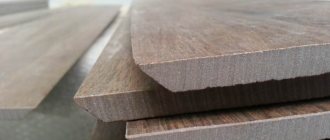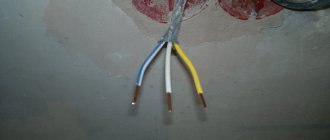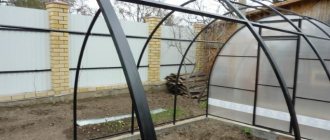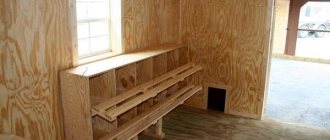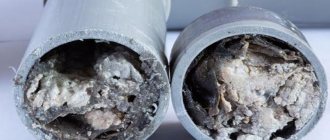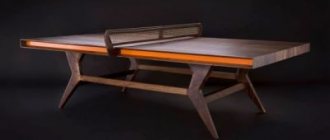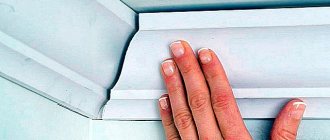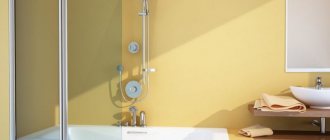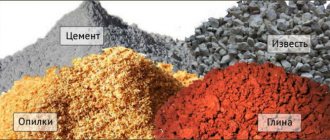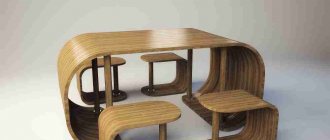For finishing work, gypsum fiber sheet, or gypsum fiber sheet, is often used. This material was created much later than drywall, so it did not gain such widespread popularity as gypsum board. However, thanks to the special composition, these boards have outstanding strength and fire protection characteristics with indicators much higher than those of plasterboard. Therefore, GVL is indispensable for the construction of bulk floors, rough finishing of walls and ceilings, as well as for the construction of all kinds of boxes. The only question that arises when working with this building material is how to cut gypsum fiber boards from Knauf.
Description of material
They produce products that create a hard coating only in dry rooms and materials that work in humid conditions.
In both cases, the panels are not destroyed by sunlight or atmospheric chemicals. Types of gypsum fiber boards produced :
- GVL is a common material, not resistant to water;
- GVLV - sheets have moisture-proof qualities.
The moisture-resistant option is installed in production workshops where processes involving the release of wet vapors take place, while sanitary treatment is allowed. The introduction of hydrophobic additives into the gypsum mass allows its use in bathrooms, residential and public kitchens.
Pros and cons of GVL
When heated, it does not emit harmful components into the atmosphere, therefore it is safe for humans
Quick to install, no curing required, no debris during installation
Provides a comfortable indoor climate because it “breathes” (passes steam and air)
Provides additional protection from external noise
Does not require mandatory surface finishing with putty and reinforcing mesh
Does not burn, because there is no cardboard shell on the surface
Heavy weight compared to drywall, so a reliable frame is required
When installing without a frame, high-quality gypsum glue or dry cement-based adhesive mixtures are required
The difference between GVL and GKL
The finishing material was created later than drywall, so it is devoid of its disadvantages, but has acquired many advantages. The first advantage, compared to gypsum plasterboard, is increased strength and longer service life as a leveling layer.
Differences in installation and design:
- Drywall has many types of bevels that are designed to seal seams, but do not allow straight sides. GVL has varieties: PC - straight edges and FC - a type of folded edge.
- Sheets of plasterboard are placed on the frame without gaps between them, and gypsum plasterboard panels are placed with a gap of 5 - 7 mm (for ease of sealing the seam).
- Racks under gypsum boards are mounted with a gap of 600 mm, and vertical elements of the sheathing under gypsum fiber boards - with a gap of 603 mm, so that it is possible to form a gap between the sheets.
- When installing a two-layer coating of partitions, plasterboard boards of the first and second tiers are secured to the profile with self-tapping screws. GVL allows you to fix self-tapping screws not only in racks, but also in the panels of the previous layer.
- Drywall is not used on floors as a rough layer, because it does not have enough strength, and gypsum fiber board can withstand operational loads in the room.
When installing moisture-resistant fiber boards, leave an installation gap of 5 mm between the ceiling and wall. They are joined to the floor with a gap of 10 - 12 mm. The screws are twisted at an angle of 90°, they go to a depth of 1 cm in the profile.
Install the material with the front side facing out; it can be identified by a flat surface without rough protrusions. A marking consisting of letters and numbers is applied to the reverse side. There are markings on the face for drilling with self-tapping screws in the form of dots.
Advantages of GVL
To answer our question, we need to understand what this material is. Gypsum fiber sheets, like plasterboard, are made from building gypsum. But that's where the similarities end. The main features of GVL are:
- Reinforcement with dissolved cellulose.
- Complete homogeneity of the material.
- No top cover.
- Non-flammability.
- High density.
Many manufacturers produce this building material, but the most popular is manufactured gypsum fiber board called “Supersheet”. If we continue to compare gypsum fiber with plasterboard from the same company, we can see that they complement each other perfectly. And the use of these materials during finishing work will only benefit the renovation.
Despite the fact that any box can be made from gypsum fiber board, and the walls will be strong and non-flammable, nevertheless, this material cannot be bent like drywall. This means that it is not suitable for installing complex structures with rounded shapes.
But on the floor, in dry screeds with expanded clay (KNAUF-Superfloor technology), gypsum fiber sheets have no equal. Using them in the construction of a subfloor will guarantee positive results. Floor elements glued together from two sheets of GVLV with a total thickness of 20 mm have the following useful properties:
- They don't break.
- Keeps the cold out.
- Create a perfectly flat surface.
- Moisture-resistant gypsum fiber boards can withstand humidity up to 70%.
USEFUL INFORMATION: Soundproofing rooms in an apartment in a new building
Tools required for working with gypsum fiber boards
The panels have high compressive strength, but low bending strength , so the material is classified as fragile. You need to know exactly the cutting rules and how to cut the gypsum fiber sheet.
Mark the parts using a tape measure and pencil.
Tool options used for cutting :
- construction knife or cutter;
- special hacksaw;
- Bulgarian;
- a circular saw;
- jigsaw
knife , so you will have to frequently change the removable 12 mm wide blades, as they will become dull on the plaster base. The tool is used if a perfectly smooth edge is not needed or the end will be located at an angle. The GVL hacksaw has the correct angle of teeth and original sharpening; almost no dust is emitted during operation.
A stone disc is installed on the grinder When cutting, the tool generates a lot of dust, so it is necessary to use protective respirators. A circular saw will also cope with the cut quickly, but it is better to work with such power tools outside or in a well-ventilated area.
At home, an electric jigsaw with a vacuum cleaner function , which can be used to cut off gypsum fiber boards without dust and quickly. A wood saw with wide teeth of 4 mm is placed in it. The good thing about a jigsaw is that you can make not only rectangular cuts, but also cut out curly lines and cut holes in panels.
The cut ends are cleaned with a plane , on the surface of which there is a grater with sharp metal protrusions. When they fail, such graters are replaced with spare elements.
What is the material
GVL is an abbreviation for gypsum fiber or gypsum fiber board (both options are correct). It is often compared to drywall, but, unlike it, it has high performance characteristics, since it is not covered with cardboard on both sides. According to the technology, up to 80% of the mixture is gypsum, the rest is loose cellulose fiber, which is obtained from paper. The desired shape and uniform structure is obtained through pressing.
Due to the fact that no binding chemicals are added to the product during production, the material is completely safe for health. In addition, the sheets are hygroscopic, which allows you to maintain a certain microclimate in the room: at high humidity, the plate absorbs excess, and at low humidity it releases it.
The density of gypsum fiber sheets is significantly higher than that of gypsum plasterboard, so cutting the material requires a special approach
There are two main types of products: standard sheets of GVL and GVLV (moisture-resistant material, which is obtained by adding hydrophobic substances to the mixture).
Gypsum fiber has high strength, so it is more difficult to cut than drywall. But, unlike gypsum plasterboard, gypsum board does not have such plasticity and is not able to bend. This must be taken into account in order to cut the product correctly and without damage.
Rules for cutting slabs without chipping
A knife is used to cut the panel in several passes.
Successive cuts are made along the intended line until the slab is cut through 2/3 of the thickness. After this, the sheet is broken so that it is divided into two parts. Before work, select the surface where the cutting will take place. This should be a platform with a flat plane. A wooden strip with a thickness of 20–25 mm is placed under the intended line along the entire length of the cut. The blade of the disk is guided evenly, without moving from the line; it is not recommended to rush when working.
How and how to cut gypsum fiber board at home
Content
Gypsum fiber sheet or GVL is actively used in finishing work.
This material was created later than drywall, so it has not yet managed to become so popular. Gypsum fiber sheets have a special composition, which provides them with completely new characteristics of strength and fire resistance, exceeding gypsum board several times. GVL is considered an indispensable material when creating bulk floors, the initial finishing of walls, ceilings, as well as in the process of constructing various boxes. In the process of working with such a valuable material, only one important question arises - how to cut gypsum fiber board?
Sawing gypsum fiber supersheet from Knauf
The cutting option using hand tools, such as a knife or cutter, is most often used. The power tool will generate dust. For a small amount of work, you can get by with simple devices.
Sequence of work:
- lay the sheet on a flat plane, you can cut the top sheet on the package without removing it;
- markings are applied to the panels, a rule is applied along the line, and it is pressed well;
- cut along the line with force several times, trying to immerse the blade evenly;
- a block is placed under the cutting line;
- The edge of the slab is lifted, broken along the line, dividing it into parts.
If you need to make a fold on a straight edge, use a cutter knife or chisel. For large volumes they work with a router with a 4 mm groove cutter. To fit pieces of gypsum fiber board in place, a roughing plane is used.
Niche from GVL. How to make a niche from plasterboard - description of the technological process
A niche is a recess in the wall that serves as decoration or furniture - for placing a cabinet, shelf, flowerpot, sculpture. It is convenient to equip it when covering the wall with panel materials. For example, assemble it from gypsum board sheets on a frame, followed by painting and plastering the wall. How to make a niche out of plasterboard with your own hands, and what kind of finished wall decor might it look like?
Why do they make niches in the walls?
Modern decoration uses niches as functional elements. You can not only place cabinets and shelves in them, but also install various equipment - television screens, sound speakers, electronic items. You can also arrange a night light in them.
Niches are often used to disguise protruding objects - for example, heating radiators. Or to visually enlarge a small space. Narrow vertical recesses in the wall “raise” the ceilings, and horizontally directed recesses “expand” the rooms.
Therefore, their arrangement is often used in small spaces, one-room apartments, and Khrushchev-era apartment buildings. Also, recesses in the walls are often made in those rooms where there should be a minimum of furniture - corridors.
Note: in the same room you can successfully combine different options for plasterboard finishing - niches, arches and columns made of plasterboard.
↑
Shapes and sizes
A niche is a recess that can have different shapes, sizes and additional decor. What it might look like:
- Shape - can be rectangular, square, with an arched vault. It can be located vertically or horizontally. An unusual shape is possible - rounded, with curved lines.
- The shape of the recess can be a step with a right angle between the side surface and the wall. Or you can make a round recess in the wall.
- It is possible to have lighting in the form of built-in lamps - LED spotlights.
- It is possible to have other electrical equipment - sockets, switches, if you plan to install a TV, home theater, stereo system, or sound speakers in the niche.
- There may be doors on the sides - such recesses in the wall are called closed niches. Recesses without doors are called open.
↑
Tools and materials
To create a niche in the wall using gypsum board sheets, you will need the following materials and tools:
- Sheets of plasterboard - for living rooms use regular plasterboard, for the kitchen - moisture-resistant plasterboard boards. Moisture-resistant panels do not dampen, and for visual distinction they are produced painted green.
- Aluminum profile - sold in various section sizes, with a length of up to 4 m. For arranging plasterboard walls, a profile with a section of 27x60 mm is often used.
- Fastening elements: plastic dowels with metal screws or dowel-nails - for attaching profiles to the wall. If the wall is brick or concrete, use self-tapping screws 40 mm long. Self-tapping screws for attaching profiles to each other - so-called “bugs” with a threaded drill bit 9 mm long are often used. Self-tapping screws for fastening gypsum boards - a length of 25 mm is sufficient if 1 layer of drywall is used.
- A drywall knife or grinder, a jigsaw, a hacksaw for cutting plasterboard sheets, metal scissors for cutting profiles.
- Screwdriver, drill and screwdriver - for tightening screws and self-tapping screws.
- Level or plumb line - for measuring horizontal and vertical lines.
- Ruler, pencil, tape measure - for determining sizes.
- Serpyanka tape is a reinforcing tape for sealing seams and joints.
- Corners - to strengthen the outer corners and give them a perfect smooth shape.
- Spatula – for applying and leveling putty.
- Putty for drywall – “Start” and “Finish”.
Like GVL Knauf putty. Make a frameless installation
Stages of laying gypsum boards on the floor
The frameless method is rarely used for gypsum plasterboard sheets, but for indoor walls, plasterboard boards are the most preferable option. Installation using this method is carried out in the following sequence:
- If the walls are uneven up to 4 mm, the sheets must be glued directly to the wall surface using gypsum putty, which is applied in longitudinal layers in a fairly thin layer around the perimeter of the GVL board, after which the sheet is glued to the wall.
- If the unevenness is 4-20 mm, the sheets are laid using a special glue such as Perflix. The composition is applied to the GVL surface in the middle and along the perimeter of the plate in increments of 30-35 centimeters.
- If the unevenness is very large, from 20 to 40 mm, installation will be more difficult. First, with your own hands, using a special glue, 100 mm wide gypsum plasterboard strips are glued to the surface of the walls, and only then the slabs themselves are glued to them with gypsum putty.
READ How to Correctly Cut Ceiling Plinths in Corners
Installation using the frameless method proceeds as follows:
Drywall fastening diagram for glue.
- Installation should be carried out before laying the finishing floor. The room temperature should be from 10 ° C. The sheets themselves should be stored before work in the room where the installation will be carried out for two or three days. Humidity and temperature must be maintained throughout the installation period; For very wet rooms, such as bathrooms, it is better to use plasterboard moisture-resistant boards.
- If necessary, the walls must be prepared and cleaned of remnants of the old coating. If the surface is layered, measures should be taken to strengthen it. The wall is putty, it must dry, after which you can begin installation.
- After finishing the putty, the verticality of the walls and the presence of burrs must be adjusted according to the level of the structure (this depends on the choice of installation method). The surface is marked with the location of the plates. If necessary, the walls are treated with a primer.
- GVL plates are cut out, holes for switches and sockets are cut out in them. The height of each piece should be such that there is a gap of 8-12 mm at the bottom. After installing large slabs, small sections are installed at the bottom to close the gaps. For safety reasons, the sheets can be attached to the wall surface using self-tapping screws.
- GVL boards are glued to the wall using special compositions in accordance with the chosen method. This is done using a calibrated notched trowel; after applying the mixture, the sheet is leveled with a hammer. If any furniture is planned to be installed on the wall surface, then glue must be applied to the entire surface of the gypsum board.
Gypsum fiber cutting process
With any cutting method, you should remember to be careful and careful when handling gypsum fiber boards. If you decide to use cutters or a special hacksaw to carry out the work, then you need to proceed as follows:
- We make the necessary markings on the GVL sheet.
- We apply an even strip to the marking line. You can also use a rule.
- We carry out the knife as many times as necessary so that the depth of the cut is at least 2/3 of the thickness of the sheet.
- We place a strip under the cut line.
- Gently break it with a sharp upward movement.
Before cutting, it is better to additionally watch a video on how to properly cut a sheet.
But the most convenient way to make a fold is with a shoe-cutter or chisel. For large volumes, you can use a milling cutter. A 3–4 mm groove cutter will allow you to complete the necessary work in 2–3 passes.
Gypsum fiber sheet is moisture resistant and fireproof. And of course, it is quite durable and hard. It has many properties similar to drywall. But thanks to its better composition, it has much more advantages for leveling the surface.
GVL is an absolutely environmentally friendly material. Almost entirely gypsum fiber consists of natural components. And thanks to this, the ceiling will be safe and the room will immediately have a favorable microclimate. This greatly affects the overall experience of everyone in the room. If the moisture level is high, the gypsum fiber will absorb it completely, and if necessary, it will give it back.
It is laid on the floor, walls and ceiling. Since it retains excellent heat and prevents excess noise from the outside from entering your room. Craftsmen also use it to install window slopes; it perfectly levels the floor. Its main advantage is dry screed. And thanks to this, the time for repair work is reduced several times, and the amount of construction waste is reduced.
Even if you decided to do all the home repairs yourself, this material is perfect for beginners. It is easy to install, the installation technology is quickly mastered, and can be combined with additional layers of floor insulation.
The similarity between gypsum plasterboard and plasterboard lies in the name; the main material is building gypsum. And that is all. It has many features that determine its qualities:
- When it is created, it is reinforced with dissolved cellulose. This makes the material so strong that it can withstand extreme conditions. And only if you try really hard, cracks will appear on it. But in everyday conditions this is practically impossible;
- gypsum fiber sheets are absolutely homogeneous. Due to this, it has a high density. Which increases its strength. At the same time, it perfectly retains heat transfer without additional layers of other materials. Also, this density guarantees complete sound insulation;
- its composition and uniformity make it possible not to cover it on top with a tightening or securing element, like plasterboard. This property allows you not to cover it with numerous layers of finishing;
- Thanks to its unique composition, it is almost impossible to burn.
Considering that any box can be easily made from gypsum fiber, the walls become stronger and are not able to catch fire, it is impossible to bend it. While this is typical for drywall. And therefore, if the design has fixed shapes, it will not fit.
But if high moisture resistance is required, for example, for a floor, GVL is perfect. For this purpose, a special type is used - moisture resistant. It is laid on the floor in two layers. And then it cannot be broken and the cold will not penetrate the room. During installation, an absolutely flat, ideal surface is created. And the humidity in a room with such a floor can reach as much as 70%. And you need to know exactly how to cut gypsum fiber boards.
Differences between GVL and GKL:
- gypsum fiber sheets are usually used in those rooms where high protection against impacts is required; it is much harder than plasterboard;
- thanks to the homogeneous composition of gypsum fiber board it is easy to saw regardless of direction;
- plasterboard is a flexible material, which is absolutely not typical for gypsum fiber;
- The environmental friendliness of GVL is much higher than that of drywall. And everything is achieved using its high density. It is practically indestructible. While gypsum plasterboard loses its properties over time, dust is formed, which can enter the respiratory tract;
- plasterboard is absolutely not suitable for laying on the floor, while gypsum plasterboard is capable of absorbing moisture and retaining heat when used in this manner;
- fire resistance is inherent in absolutely all types of gypsum fiber sheets. While drywall does not have this, there is only a special marking with this characteristic;
- GVL is absolutely not suitable for wall finishing if the finishing layer is wallpaper or oil paint.
The difference between the materials is such that despite the same base - building gypsum, their scope of application is different. When working with gypsum fiber board, you need to know exactly how to cut it.
How to cut gypsum fiber board at home
Working with any finishing material requires knowledge of its proper processing. This avoids serious problems that can delay cladding processes and lead to product damage. Due to its increasing popularity, it is necessary to take into account the features of gypsum fiber boards. The greatest difficulties can be caused by trimming sheets; the procedure has its own nuances.
Scope and cutting features
The material is installed to level horizontal and vertical planes; it is used in basements and ground floors where there is high humidity (not higher than 70%). They are rarely used on ceilings due to their heavy weight, but they are often used as a base for finishing floors and walls. Fiber panels are combined with surfaces made of stone, wood, brick, porous concrete and other materials.
GVL and GVLV sheathing options:
- premises in residential buildings where there is steam, moisture, but there is no direct contact with water jets;
- walls and partitions in outbuildings that are not heated;
- finishing of sports halls, areas where a rigid base of floors and walls is required;
- cladding of industrial premises with an increased risk of fire;
- cladding of attic and mansard floors;
- installation of window and door slopes.
Valera
The voice of the construction guru
Ask a Question
During production, cellulose fluff fibers are added to the gypsum mixture. Reinforcing threads give the material strength, so cutting gypsum plasterboard is more difficult than plasterboard sheets. Moisture-resistant gypsum fiber panels are non-plastic, so they cannot bend even to a small radius. This property is taken into account before sawing gypsum fiber sheets. The product may crack if it is incorrectly positioned and supported when cutting.
Slab sizes:
- 1.5 x 1.0 m, thickness 10 mm;
- 1.2 x 1.2 m, thickness 10 mm;
- 2.5 x 1.2 m, thickness 10 mm;
- 2.5 x 1.2 m, thickness 12.5 mm.
Manufacturers produce small-sized panels to reduce the number of cut parts, but you still have to cut the gypsum fiber board to cover the surface.
